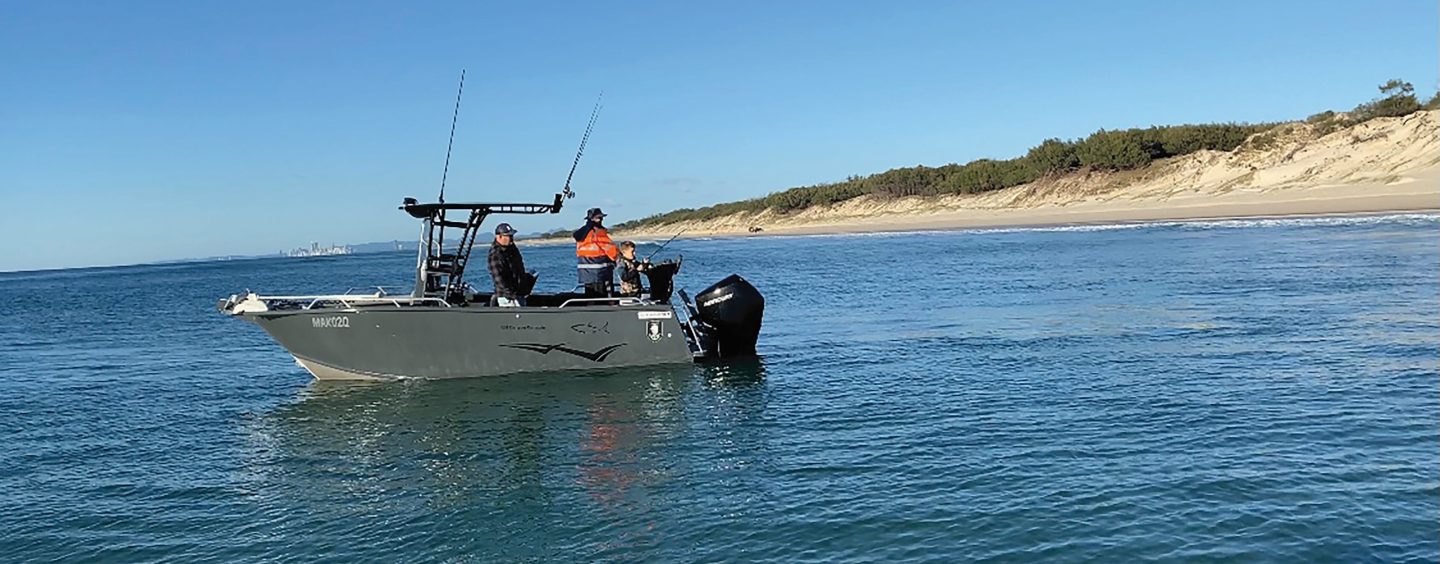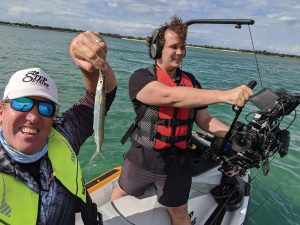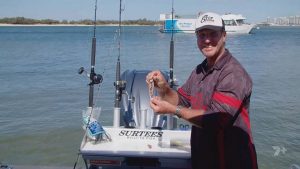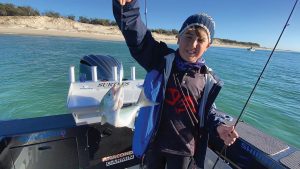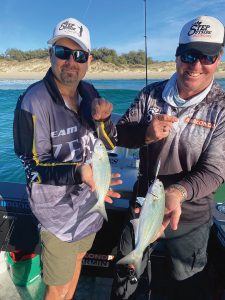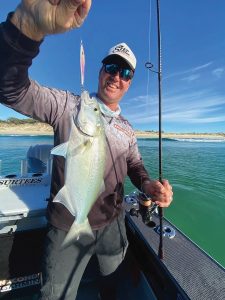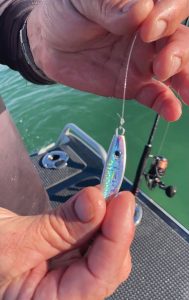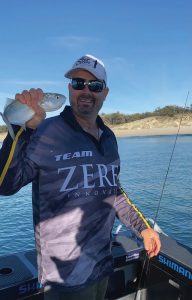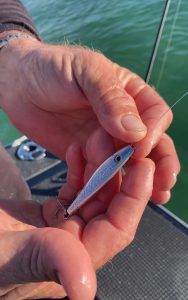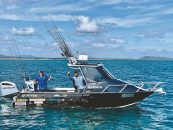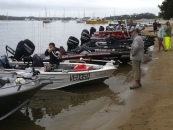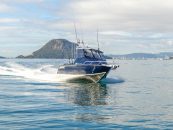There’s something about fishing the beach gutters that sets the heart racing. But try fishing the beach gutters from a boat, and go that extra level and get that adrenaline rush.
As a young fella, I was always out with friends on our tinnies, fishing the coast. We would drive in over the back bank, before quickly swinging the nose out to sea to take on the waves while the designated fisher cast his lure into the surf gutter behind the engine. At times, when the sets rolled in, the only way out was to head west; unfortunately, that meant up the beach. We would quickly accelerate and f lick the boat around in knee-deep water, jump out and hold the sides of the tinnie to brace against the impact of the white wash rolling in. Once the sets had gone, we would jump back into the tinnie, head out and cast the next gutter. Man, was that fun or what! And at the end of the day, we would be stoked bringing in an esky full of quality greenbacks.
Today, fishing this way is a much more common scene, especially on a calm day when the westerlies are blowing, the seas are small, and the fish are biting. In fact, it is not uncommon to see a dozen boats or more working the beach gutters along South and North Stradbroke Island targeting the annual run of tailor. You just don’t see the beaching of the boats at all these days as the boats are generally much bigger.
You see, we still fish this way, but nowadays, it is out of a 7-metre Surtees Game Fisher powered by a 250hp Yamaha four-stroke, not a 3.3m tinnie powered by a 15hp Johnno.
The larger boat still gives you the adrenaline rush that this style of fishing injects into you. However, you become more aware of the risks around you, as there is no way you would be beaching a boat that weighs well over a tonne.
With the addition of the Yamaha Helm Master station, you can sit exactly where you want to be and cast the gutters whether you are the skipper or a mate joining in on the action. You see, the place to be is where the gutter runs out between the two back banks where the waves break and roll in. It sounds as if you are in the thick of the action, and to be honest, you are.
The Helm Master allows you to spot lock using the main outboard engine. Therefore, you can hold the boat via GPS, and have the bow facing out towards the incoming swell. Common sense must be used here, for if the swell is over a metre and it is a run-out tide, then there is no way on this planet you would be out there as that is really asking for a problem. Being out there in less than a one-metre swell, a calming westerly wind and a near on high tide, is ideal. The gutter to be in should start at around 2 metres-plus deep.
The two side banks where the waves will break is generally less than a one-metre, and that is a place you definitely do not want to be.
Once you are in the gutter, simply cast out a metal lure towards the beach, and often right up onto the sand. Then start retrieving. The beach gutter should be around 2 to 3 metres deep. You really want to work over the area where the whitewash is rolling through. Also, try spinning the banks beside you just behind the breaking waves as tailor will often school and dart in and out of these areas chasing scared baitfish.
Regardless of the near-perfect weather and ocean conditions, it is very important to keep an eye on the approaching swell, as it only takes one wave to put you into a place of hurt.
The gear I like to use is light, such as the Shimano Zodias 7ft 7-14lb spin stick matched with a Shimano Vanford 5000 spin reel. The braid I use is Ocea 8 PE 1.5 attached to a short 2-foot of 30lb fluorocarbon leader. Lures, such as the Halco Twisty and Gillies 30gram baitfish profile in pearl white, are both killers when it comes to spinning for tailor.
The trick is not to wind too fast, as tailor are quite uncoordinated and will often jump around and over your lure resulting in a lip-hook or no-hook, especially when using 6” stick baits.
Upon catching your tailor, bleed them before placing them straight onto ice and remember your bag and size limits, which in Queensland is a minimum length of 35 centimetres, and a bag limit of 20 per person in possession.
If you are thinking about casting a pillie or garfish out, I would not bother, you are better off doing that from the beach as casting a metal slug or stickbait allows you to quickly work that one gutter before moving off the next and so on. Bait fishing will slow you down even if the fish are on the bite.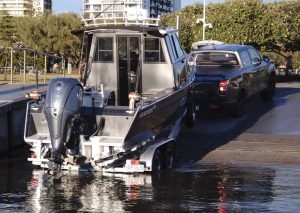
Enjoy and good luck!
Step Outside with Paul Burt is a show that quite simply is for everyone wanting to “step outside” and learn where to go and what to do when they get there around the country. Keeping with the popular outdoor highlights of fishing, surfing, camping, caravanning, four-wheel driving, cooking and of course boating. Step Outside with Paul Burt is an educational and informative show covering all things outdoors. Watch Paul every weekend on 7Mate as they Step Outside with the help of Anaconda, have some fun and learn a few tips and tricks along the way.
www. stepoutside.com.au
Published in print October-December 2021






















